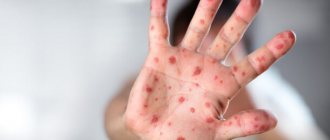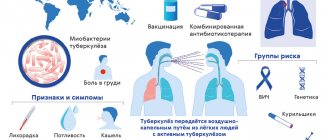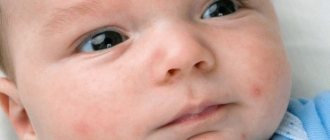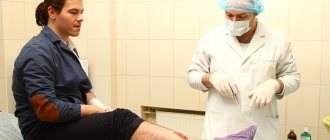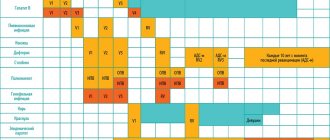Vaccinations do not end with childhood. It is better to prevent any disease than to treat it later and deal with the consequences, and not only children, but also adults need protection from infections. Therefore, experts have developed a calendar of preventive vaccinations necessary for different categories of patients.
As practice shows, many patients do not know that vaccination against diphtheria, tetanus, rubella, measles, hepatitis B, and influenza is mandatory. It is also recommended to be vaccinated against meningococcus, pneumococcus, hepatitis A and B, chickenpox, tick-borne encephalitis, HPV (up to 45 years of age) and other infections according to epidemiological indications.
National calendar of preventive vaccinations
With changes and additions from June 16, 2021, April 13, 2017, April 24, 2021, September 14, 2021.
| Categories and ages of citizens subject to mandatory vaccination | Name of preventive vaccination |
| Newborns in the first 24 hours of life | First vaccination against viral hepatitis B |
| Newborns on days 3-7 of life | Vaccination against tuberculosis |
| Children 1 month | Second vaccination against viral hepatitis B |
| Children 2 months | Third vaccination against viral hepatitis B (risk groups) First vaccination against pneumococcal infection |
| Children 3 months (6.1) | First vaccination against diphtheria, whooping cough, tetanus First vaccination against polio First vaccination against Haemophilus influenzae infection (risk group) |
| Children 4.5 months (6.1) | Second vaccination against diphtheria, whooping cough, tetanus Second vaccination against Haemophilus influenzae infection (risk group) Second vaccination against polio Second vaccination against pneumococcal infection |
| Children 6 months | Third vaccination against diphtheria, whooping cough, tetanus Third vaccination against viral hepatitis B Third vaccination against polio Third vaccination against Haemophilus influenzae (risk group) |
| Children 12 months | Vaccination against measles, rubella, mumps Fourth vaccination against viral hepatitis B (risk groups) |
| Children 15 months | Revaccination against pneumococcal infection |
| Children 18 months | First revaccination against polio First revaccination against diphtheria, whooping cough, tetanus Revaccination against Haemophilus influenzae infection (risk groups) |
| Children 20 months | Second revaccination against polio |
| Children 6 years old | Revaccination against measles, rubella, mumps |
| Children 6-7 years old | Second revaccination against diphtheria, tetanus Revaccination against tuberculosis |
| Children 14 years old | Third revaccination against diphtheria, tetanus Third revaccination against polio |
| Adults over 18 years old | Revaccination against diphtheria, tetanus - every 10 years from the date of the last revaccination |
| Children from 1 year to 18 years Adults from 18 to 55 years old, not previously vaccinated | Vaccination against viral hepatitis B |
| Children from 1 year to 18 years (inclusive) Women from 18 to 25 years old (inclusive), not sick, not vaccinated, vaccinated once against rubella, who have no information about vaccinations against rubella | Vaccination against rubella, revaccination against rubella |
| Children from 1 year to 18 years (inclusive) Adults up to 35 years of age (inclusive), not sick, not vaccinated, vaccinated once, without information about measles vaccinations Adults from 36 to 55 years (inclusive) belonging to risk groups (employees of medical and educational organizations, trade, transport, public utilities and social spheres; persons working on a rotational basis and employees of state control bodies at checkpoints across the state border of the Russian Federation) who have not been sick, have not been vaccinated, have been vaccinated once, and have no information about measles vaccinations | Vaccination against measles, revaccination against measles |
| Children from 6 months Students of grades 1-11 Students in professional educational organizations and educational organizations of higher education Adults working in certain professions and positions (employees of medical and educational organizations, transport, public utilities and services); persons working on a rotational basis, law enforcement officers and state control bodies at checkpoints across the state border; employees of social service organizations and multifunctional centers; state civil and municipal employees Pregnant women Adults over 60 years of age Persons subject to conscription for military service People with chronic diseases, including lung disease, cardiovascular disease, metabolic disorders and obesity | Flu vaccination |
“Anti-vaxxers” - who are they, what goals do they pursue?
Nowadays you can often hear the opinion of different people that vaccinations should not be done - they have received the nickname “anti-vaxxers”. In this case, it is worth dividing them into two categories:
1. Those who simply do not understand what they are talking about.
2. Those who spread this kind of propaganda deliberately.
In the first case, these are simply narrow-minded people who should not be paid attention to (akin to astrologers, traditional healers, holy fools, fortune tellers, etc.). But if a person, and even more so a certified medical worker, consciously opposes vaccination, then this is a criminal who should be punished for such statements, because they carry an antisocial orientation.
By the way, the last category is largely made up of journalists - the entire anti-vaccination campaign (it began in 2010-2011) started after the publication (in one of the fairly reputable newspapers) that a child died in the hospital after receiving a vaccine. The thing is that in hospitals patients die from the administration of certified medications, but no one refuses their administration. For example, the probability of death from analgin was 10 people in 2021, but this drug was and is still being used. But the probability of a child dying from diphtheria is about 60%! There is a difference?
Another question arises: whose interests are “anti-vaccine journalists” pursuing when they publish this kind of material? Commercial companies, giants of the pharmaceutical industry or private clinics? In fact, none of the above - only their own. Understand correctly, journalists need a sensation, they need to attract public attention, and at any cost. And they are deeply indifferent to the health of their children. Well, they will write that thanks to vaccination they have forgotten what diphtheria is. What's the point? This will be interesting to only a few. But a dirty article about the death of a patient from a vaccination is a sensation that will “blow up” the airwaves and bring in royalties. That's all.
What vaccinations are required?
There is a list of vaccinations that are included in the National Vaccination Calendar - it must be adhered to without fail. There is a list of vaccinations that are really necessary; they will protect you from major controlled infections. Everything else is done either at will, or only by decreed groups - that is, individuals whose risk of contracting one or another pathology is much higher than others. For example, all healthcare workers and their children must be vaccinated against the flu, and this vaccination must be performed every year, because strains of the virus mutate, and last year’s vaccination may no longer be effective.
Polyvaccine or monovaccine - which is better?
The advantage of a polyvaccine is that it will simultaneously protect the child from several diseases. For example, Infanrix-Hexa - it contains DTP, a vaccine against hemophilus influenzae, hematitis B and polio. The use of this drug has a number of other advantages:
1. There is no need to come to a medical facility several times in order to be vaccinated with each vaccine separately.
2. Less stress for the child, because almost every vaccination is a subcutaneous injection.
3. No additional stress on the immune system.
Please note that it is not a fact that this vaccination will be provided in a public clinic. Most likely, you will have to buy it at the pharmacy, but this cost is completely justified.
Calendar of preventive vaccinations for epidemic indications
With changes and additions from June 16, 2021, April 13, 2017, February 19, 2021, December 9, 2021, February 3, 2021.
| Categories of citizens subject to mandatory vaccination | Name of preventive vaccination |
Persons living in territories enzootic for tularemia, as well as persons arriving in these territories performing the following work:
Persons working with live cultures of the causative agent of tularemia. | Against tularemia |
| Persons living in areas enzootic for plague. Persons working with live cultures of the plague pathogen. | Against the plague |
In foci of goat-sheep type brucellosis, persons performing the following work:
Livestock breeders, veterinarians, livestock specialists in farms enzootic for brucellosis. Persons working with live cultures of the causative agent of brucellosis. | Against brucellosis |
Persons performing the following work:
Persons working with material suspected of being infected with anthrax. | Against anthrax |
For preventive purposes, people at high risk of contracting rabies are vaccinated:
| Against rabies |
Persons performing the following work:
Persons working with live cultures of the causative agent of leptospirosis. | Against leptospirosis |
Persons living in areas where tick-borne viral encephalitis is endemic; persons traveling to areas endemic for tick-borne viral encephalitis, as well as persons arriving in these territories performing the following work:
Persons working with live cultures of tick-borne encephalitis. | Against tick-borne viral encephalitis |
| Persons performing work on the procurement, storage, processing of raw materials and livestock products obtained from farms where Q fever diseases are registered. Persons performing work on the procurement, storage and processing of agricultural products in enzootic areas with Q fever. Persons working with live cultures of Q fever pathogens. | Against Q fever |
| Persons traveling outside the Russian Federation to countries (regions) enzootic for yellow fever. Persons working with live cultures of the yellow fever pathogen. | Against yellow fever |
| Persons traveling to cholera-prone countries (regions). The population of the constituent entities of the Russian Federation in the event of complications of the sanitary and epidemiological situation regarding cholera in neighboring countries, as well as on the territory of the Russian Federation. | Against cholera |
| Persons engaged in the field of municipal improvement (workers servicing sewer networks, structures and equipment, as well as organizations carrying out sanitary cleaning of populated areas, collection, transportation and disposal of household waste). Persons working with live cultures of typhoid pathogens. Population living in areas with chronic water epidemics of typhoid fever. Persons traveling to hyperendemic countries (regions) for typhoid fever. Contact persons in areas of typhoid fever for epidemic indications. According to epidemic indications, vaccinations are carried out when there is a threat of an epidemic or outbreak (natural disasters, major accidents in the water supply and sewerage networks), as well as during an epidemic, while mass vaccination of the population is carried out in the threatened region. | Against typhoid fever |
| Persons living in regions disadvantaged by the incidence of hepatitis A, as well as persons at occupational risk of infection (medical workers, public service workers employed in food industry enterprises, as well as those servicing water supply and sewerage facilities, equipment and networks). Persons traveling to disadvantaged countries (regions) where outbreaks of hepatitis A are registered. Contact persons in hepatitis A outbreaks. | Against viral hepatitis A |
| Employees of medical organizations (their structural divisions) with an infectious disease profile. Persons engaged in the field of public catering and municipal improvement. Children attending preschool educational organizations and going to organizations providing treatment, rehabilitation and (or) recreation (as indicated). According to epidemic indications, vaccinations are carried out when there is a threat of an epidemic or outbreak (natural disasters, major accidents in the water supply and sewerage networks), as well as during an epidemic, while mass vaccination of the population is carried out in the threatened region. Preventive vaccinations are preferably carried out before the seasonal increase in the incidence of shigellosis. | Against shigellosis |
| Children and adults in areas of meningococcal infection caused by meningococci of serogroups A or C. Vaccination is carried out in endemic regions, as well as in the event of an epidemic caused by meningococci of serogroups A or C. Persons subject to conscription for military service. | Against meningococcal infection |
| Contact persons without age restrictions from the outbreaks of the disease, who have not previously been ill, have not been vaccinated and do not have information about preventive vaccinations against measles or have been vaccinated once. | Against measles |
| Contact persons from the outbreaks of the disease who have not been sick, have not been vaccinated and do not have information about preventive vaccinations against viral hepatitis B. | Against viral hepatitis B |
| Contact persons from the outbreaks of the disease who have not been sick, have not been vaccinated and do not have information about preventive vaccinations against diphtheria. | Against diphtheria |
| Contact persons from the foci of the disease who have not been sick, have not been vaccinated and do not have information about preventive vaccinations against mumps. | Against mumps |
Contact persons in foci of polio, including those caused by wild poliovirus (or if the disease is suspected):
| Against polio |
| Children aged 2 to 5 years, adults belonging to risk groups (persons subject to conscription for military service, people over 60 years old, suffering from chronic lung diseases, people over working age, living in social service organizations). | Against pneumococcal infection |
| Children for active vaccination to prevent diseases caused by rotaviruses. | Against rotavirus infection |
| Children and adults from risk groups, including those subject to conscription for military service, who have not previously been vaccinated and have not had chickenpox. | Against chicken pox |
| Children who were not vaccinated against hemophilus influenzae in the first year of life. | Against hemophilus influenzae |
Level 1 priority includes:
Level 2 priority includes:
Level 3 priority includes:
| Against coronavirus infection caused by the SARS-CoV-2 virus |
Sources
- Order of the Ministry of Health of the Russian Federation dated March 21, 2014 No. 125n “On approval of the national calendar of preventive vaccinations and the calendar of preventive vaccinations for epidemic indications.”
- Moscow City Health Department. Regional calendar of childhood preventive vaccinations.
- Office of the Federal Service for Supervision of Consumer Rights Protection and Human Welfare in the Tomsk Region. Recommendations for parents whose children are eligible for vaccination.
- Office of the Federal Service for Supervision of Consumer Rights Protection and Human Welfare in the Tomsk Region. Everyone should know this! Questions and answers on vaccination.
- FBUZ “Center for Hygienic Education of the Population” of Rospotrebnadzor. Medical treatment for vaccinations.
Vaccination against meningococcus for adults and children
Allows you to protect against meningococcal meningitis - the most dangerous of all types of airborne meningitis. Children are most vulnerable to the disease, but people of any age can get sick.
At-risk groups:
- children under 5 years old,
- teenagers 13-17 years old,
- persons over 60 years old,
- travelers.
Meningitis is unpredictable and therefore dangerous, because often healthy children without obvious signs of risk get sick, and the disease can take the life of a child in the first day from the onset of the disease. Every 5th case of the disease leads to complications (deafness, blindness, developmental delay, epilepsy, amputation of limbs, etc.).
A teenager and young adult can become a carrier of meningococcus, which will serve as a source of infection for children.
With vaccination, you can protect yourself and your child and prevent the development of a dangerous disease. The MENACTRA vaccine does not contain live bacteria, so it is used even for the youngest children from 9 months.
Tips for parents
If the temperature rises after vaccination, the child needs rest and plenty of fluids.
Photo: vodolej / Depositphotos For parents who are about to vaccinate their child, these tips can help:
- Even before vaccination, you can ask your doctor about medications that will help mitigate possible unwanted reactions. It is also recommended that you ask your specialist about the side effects for each vaccine.
- After vaccination, it is better to sit with the child for 30 minutes near the vaccination office. Then, if anaphylaxis develops, the child will receive immediate help.
- At elevated temperatures after vaccination, doctors recommend giving children more liquid: compotes, juices or plain water.
You should also not confuse side effects with minor, temporary adverse reactions, which you can easily cope with on your own without resorting to additional medical help. If such reactions occur, it is important not to panic and act according to the recommendations received from the pediatrician before vaccination (video 1).
Video 1. Problems after vaccination: advice for parents. N.E. talks about post-vaccination effects. Tkachenko, head of the department of vaccine prevention at the Scientific Center for Children's Health.
Is it possible to vaccinate unscheduled?
The vaccination schedule can be changed, for example, if you are planning a trip with a child. In this case, the pediatrician will advise on the new dates on an individual basis. And yet doctors advise not to violate the established scheme. Catch-up vaccination requires strict adherence to intervals between vaccinations. If the vaccination course is extended, it may be less effective.
Vaccination against viral hepatitis A (Botkin's disease)
Hepatitis A is transmitted through contaminated food and water (poor water supply, food contamination, poor sanitation), and is common in regions with hot climates (Turkey, Egypt, Asian countries, and other “warm” places). Therefore, when traveling, it is important to be especially careful and carefully observe the rules of hygiene.
Vaccination against hepatitis A is noted by WHO as mandatory for visiting a number of countries. Periodically, outbreaks of the disease occur in Russia.
It is important to remember that there are “anicteric” forms of the disease, which complicates timely diagnosis and treatment and leads to complications.
The Havrix inactivated vaccine (GlaxoSmithKline, Belgium) will help prevent infection.
Why did the child become sick more often?
First of all, unusually close contact with a large number of children causes the spread of infectious diseases. Therefore, the child may begin to get sick more often.
This is how the child’s immune system “trains” practically in combat conditions. As a rule, children get sick less and less by school. However, if the child did not attend kindergarten, then in primary school he may begin to experience what his peers have already experienced: frequent colds and infectious diseases.
In addition to harmless colds, highly contagious infections become especially dangerous: influenza, measles, chickenpox, whooping cough, diphtheria, pneumococcal and meningococcal infections.
Chickenpox vaccination
With direct contact with an infected person, a child becomes infected in 90% of cases, but a patient can become infected with chickenpox 2 days before the rash appears, that is, even before visible symptoms appear.
Chicken pox can cause serious complications in both children and adults (in adults, more often pneumonia; in children, encephalitis, cerebellar ataxia, hepatitis, myocarditis, vasculitis, arthritis, orchitis, glomerulonephritis). The disease is especially dangerous for pregnant women, newborns and people with weakened immune systems.
If you have known contact with a patient, you need to urgently - within 96 hours - get vaccinated (emergency vaccination) in order to prevent the development of the disease. However, it is safer and safer to schedule vaccination in advance.
Table of contents:
- What is a vaccination calendar?
- What should a child be vaccinated and when?
- In what cases are test results required for admission to vaccination?
- Why do children need to be vaccinated so early? Is it possible to postpone vaccination?
- In what cases should vaccination not be carried out?
- How does a reaction to a vaccine differ from complications?
- Is it possible to get sick from a vaccine against the disease against which it is given?
- Why should I vaccinate my child if everyone around me is vaccinated?
- “I heard a story: a healthy child was vaccinated, and after that he became seriously ill and became disabled”
- Why get vaccinated against chickenpox? After all, this is a mild childhood illness.
- The meningococcal vaccine is very expensive. Is it really necessary?
- Why is it better to choose a vaccine with a component that protects against Haemophilus influenzae infection?
- Why is it necessary to vaccinate a child against pneumococcus?
- We have never heard of the rotavirus vaccine. Why is it needed?
- How many vaccines can be given at one time?
- What should be the intervals between vaccinations?
What do vaccines consist of?
The goal of a vaccine is to mimic a disease without causing its symptoms. In this case, the human immune system reacts to the vaccine as to an infection, developing protection against wild pathogens (Fig. 1).
Figure 1. How vaccines work. A - individual parts of bacteria and viruses (antigens - green triangles in the figure) are recognized by our immune system, after which the body begins to resist infection. B - vaccines contain whole cells of pathogens, or their individual antigens, and the vaccine cannot cause disease. C - when antigens are introduced into the body, our immune system generates specific protective antibodies (Y in the figure). D - if we encounter an infection in the future, the body will be able to quickly recognize the pathogen by its antigens, the disease will not develop. Source
Vaccines can be based on:
- live, weakened viruses or bacteria (wild microorganisms are grown in the laboratory in cell cultures until they lose the ability to cause disease),
- killed whole viruses or bacteria (microorganisms are inactivated with formaldehyde or heating),
- individual antigens are parts of microorganisms that are recognized by our immune system (these can be proteins or polysaccharides of the cell wall of microorganisms or neutralized toxins that bacteria release into the environment).
It is these components that provoke an immune response, “teaching” the body to recognize the pathogen and destroy it. Some vaccines protect against several infections at once (for example, the three-part vaccine against whooping cough, diphtheria and tetanus).
In addition, vaccines may contain adjuvant substances (they are designed to enhance the effect of drugs), stabilizers, preservatives and antibiotics.
What is revaccination?
In some cases, vaccine immunity lasts until the end of life after the first vaccination, but more often, in order to achieve the desired effect, you need to undergo revaccination (repeated administration of the vaccine) in time, sometimes more than one. Revaccination is carried out at strict intervals: a certain amount of time must pass between the first and subsequent applications of the vaccine, depending on the type of vaccination.
Important! Adults also need revaccination against some diseases: annually against influenza, every 10 years against diphtheria and tetanus. Young women planning a pregnancy may need to be vaccinated against rubella and measles if they have not had the disease, were not vaccinated, or received only one dose of the vaccine as a child.
Our doctors
Pastushnaya Victoria Sergeevna
Pediatrician, Chief Physician, Expert, Vaccine Prevention 25 years of experience
Gammel Elizaveta Nikolaevna
Pediatrician, Vaccine prevention, Gastroenterologist, Functional diagnostics (Taganka, Zhulebino) Experience 13 years
Ilyina Larisa Anatolyevna
Pediatrician, Vaccine prevention (Zhulebino) Experience 33 years
Konovalova Elena Borisovna
Pediatrician, Vaccine prevention (Zhulebino) Experience 35 years
Filippov Andrey Nikolaevich
Pediatrician, Vaccine prevention (Taganka) Experience 30 years


